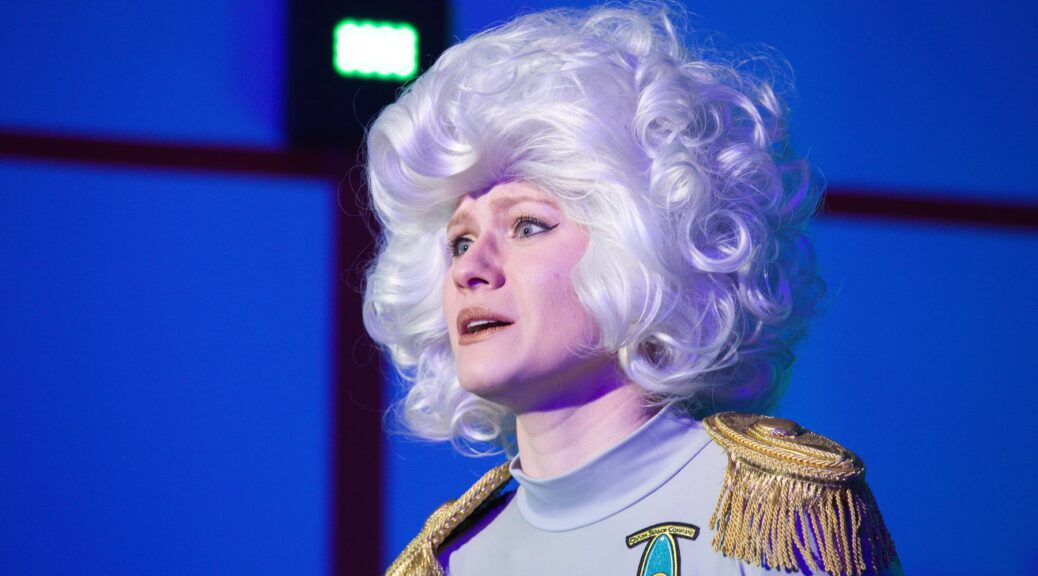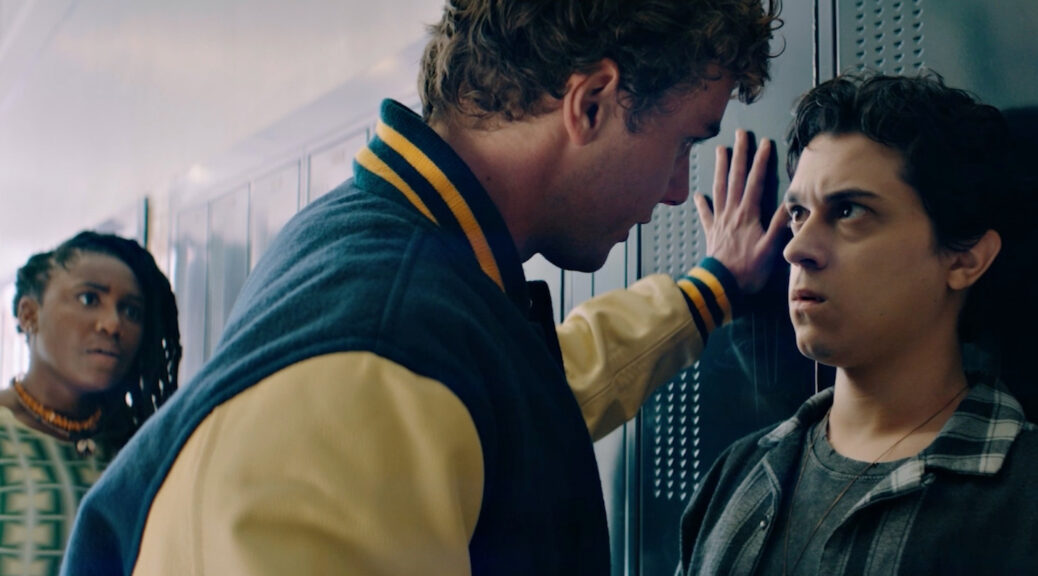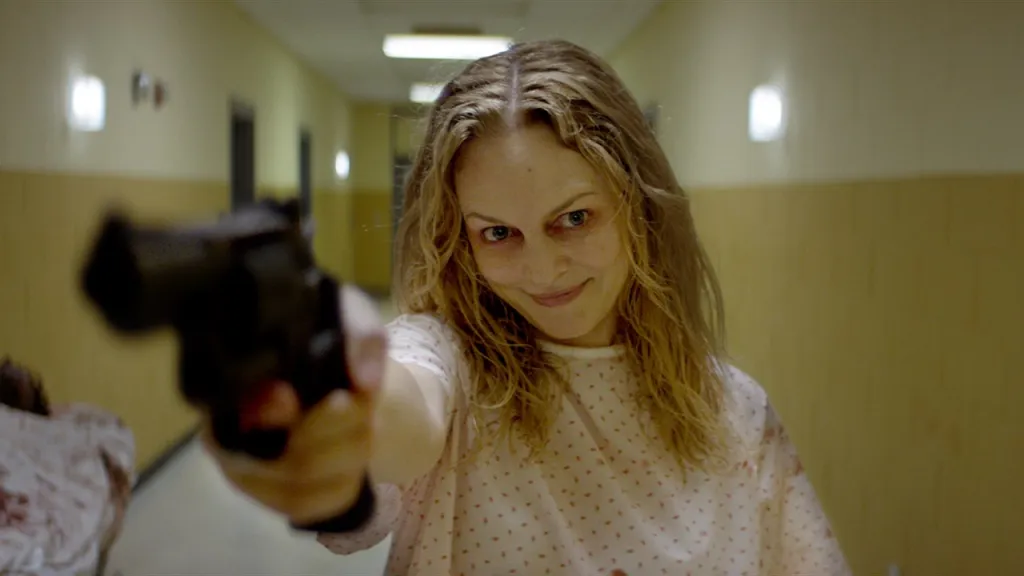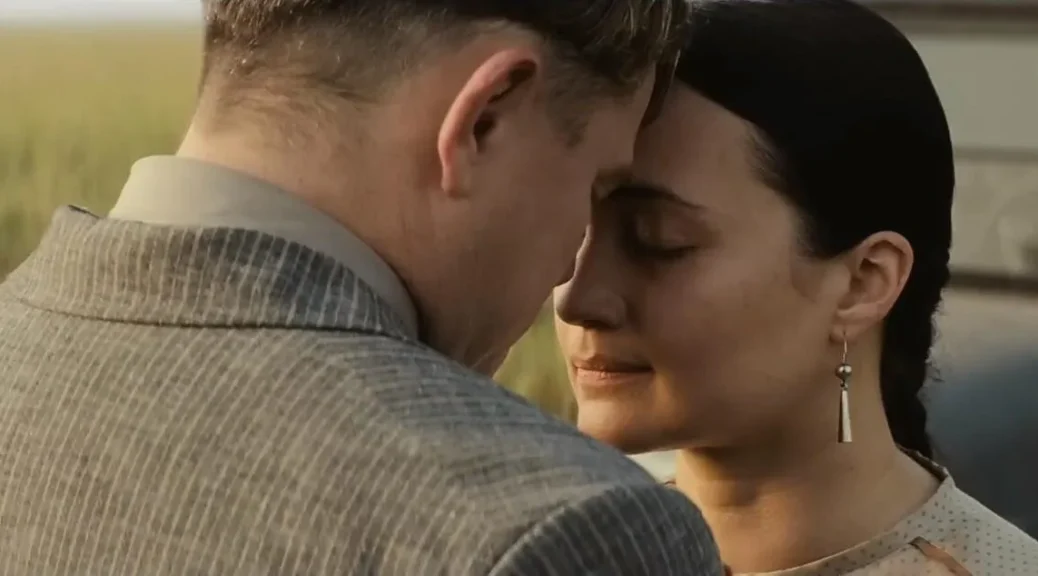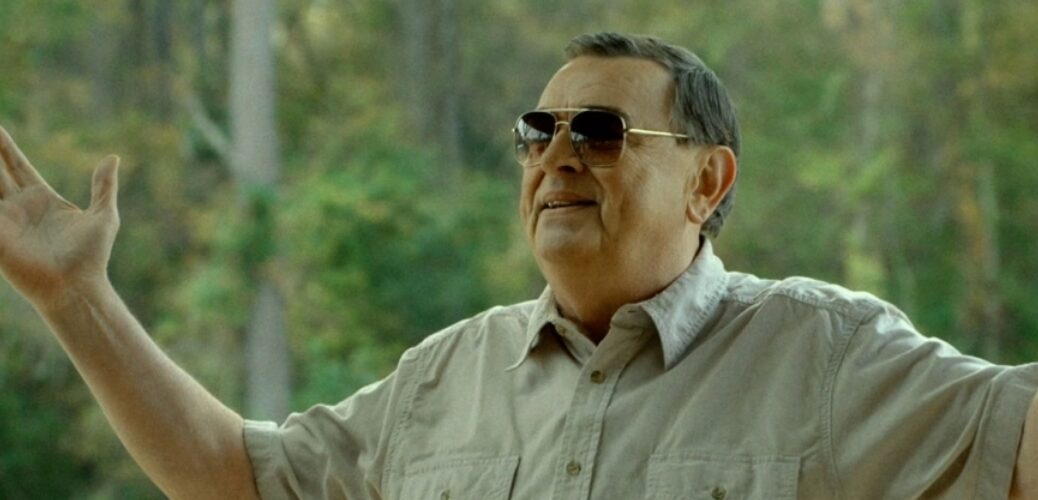by Hope Madden
The Wheel of Heaven delivers oddball charm and horror in equal measure.
What’s it about? That’s an excellent question, and not a simple one to answer. We seem to be stuck on late night, all access TV, which is running through a wild set of programs and sponsors. (My favorite sponsor is Rad Abrams, Skateboard Attorney.)
And my favorite show is undoubtedly The Uncle Bobbo Show, which was also the focus of director Joe Badon’s 2021 short, The Blood of the Dinosaurs.
Kids’ TV host Uncle Bobbo (an eerily unblinking Vincent Stalba) wants to teach us where oil comes from. With assistance from his vampire puppet co-host Grampa Universe (voiced by John Davis) and his young helper Purity (Stella Creel), he seeks to enlighten and entertain. And misinform. It’s sort of a Pee-wee’s Playhouse for sociopaths. If that does not seem like a ringing endorsement, you’re not reading it correctly.
So, we’re watching highly local TV programming. Or are we? Maybe each story is a little diorama dreamt up by local artist Margaret Corn (Kali Russell)? Or perhaps we may instead be reading along with Marge the Mechanic (Russell again), who picked up a “choose your adventure” book at a thrift store.
Russell plays at least half a dozen distinct but related characters, each a fully formed and often bizarre individual. Her range and effortless skill with characterization ground the segments in something tangible, however goofy the character.
Whether these characters are part of a book, TV programming or one artist’s imagination is irrelevant. Badon’s upended the concept of a framing story for what is essentially an anthology of short films. Every tale, including the framing stories, morph and mutate and as each folds in on itself, Badon and his crew appear to emphasize the illusion versus reality of this absurdist storytelling.
What else does Badon hit on? Birth. Death. Choice. 3D glasses. Kitch. Homage. Dinosaurs. Storytelling. But mainly creation and how the act of creating is linked to all of these. The Wheel of Heaven throws a lot at you and not all of it hits, but Badon’s instinct for the bizarre, humorous and horrific generate a wonderfully oddball effort.
